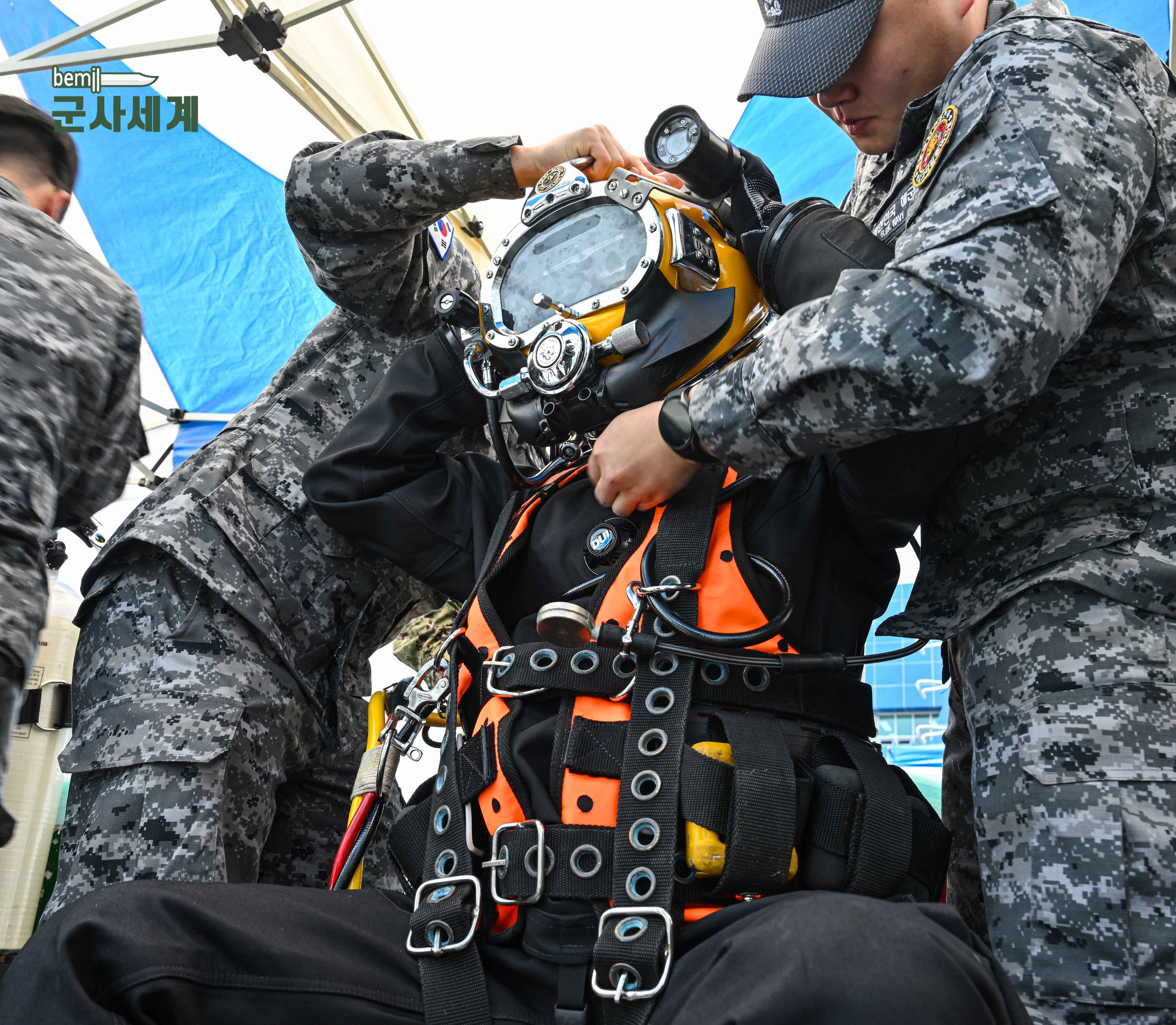ROK, U.S. Navies Boost Underwater Rescue Capabilities in Joint Salvage Exercise Off Jinhae Bay
BEMIL Views






The South Korean and U.S. navies are holding a weeklong joint salvage exercise in the waters off Jinhae Bay, Gyeongsangnam-do, to enhance their combined capabilities to respond to maritime emergencies.
Running from Monday through Friday, the annual drill—known as SALVEX (Salvage Exercise)—is designed to sharpen coordination during both peacetime and wartime operations. The training emphasizes real-world scenarios, interoperability, and the integration of advanced diving and salvage technologies.
A Growing International Effort
South Korea’s Salvage Operations Battalion, part of the Navy’s Salvage and Rescue Unit, participates alongside the 3,500-ton rescue and salvage ship ROKS Gwangyang (ATS-II). The U.S. Navy is represented by personnel from its Mobile Diving and Salvage Unit (MDSU).
For the first time, the Korea Coast Guard’s Special Rescue Unit and naval observers from the United Kingdom and Australia are joining the drills, sharing operational insights, and contributing to an expanding multinational effort.
High-Tech Tools Beneath the Surface
Joint drills have included the use of the Surface Supplied Diving System (SSDS), which provides divers with air and communication lines through a hose connected to a ship or land-based source. South Korean divers operated the Underwater Imaging System (UIS), while their U.S. counterparts used the Diving Augmented Vision Display (DAVD)—a helmet-mounted heads-up display that provides real-time data such as positioning and seafloor mapping.
Troops from both countries also conducted SCUBA training near a submerged mock vessel at a depth of around 15 meters, simulating a rescue operation for missing personnel.
Onboard the ROKS Gwangyang, teams used a hull-mounted sonar and a remotely operated vehicle (ROV) for underwater searches. In deeper waters—between 40 and 50 meters—divers trained using a Wet-Bell system, which lowers personnel directly from the ship to the ocean floor.
Strengthening Joint Readiness
“This training has significantly improved our combined salvage capabilities,” said Lieutenant Colonel Park Young Nam, the ROK Navy’s Salvage Operations Battalion commander. “We will continue to strengthen our joint readiness through practical exercises and deeper cooperation.”
U.S. Navy Lieutenant Commander Nicolas Twisselman, operations officer of the Mobile Diving and Salvage Unit, echoed the sentiment: “This exercise demonstrates our longstanding underwater partnership with South Korea. It strengthens our ability to respond rapidly and effectively to maritime emergencies.”
Strategic Planning for the Future
In parallel with the on-water drills, senior military leaders gathered for a two-day ROK-U.S. joint salvage operations meeting led by Brigadier General Lee Jong Yi, the ROK Navy Special Warfare Command Commander. Discussions focused on key salvage cases, future joint efforts, and expanding bilateral cooperation.
Rear Admiral Todd F. Cimicata, who oversees the U.S. Navy’s Combat Logistics Force (CTF-73) under the Seventh Fleet, joined the meeting to discuss long-term planning and regional coordination in complex underwater recovery missions.
As maritime threats evolve and underwater operations grow more sophisticated, exercises like SALVEX reflect a shared commitment by both navies to maintaining readiness and interoperability in the Indo-Pacific region.














Comments0